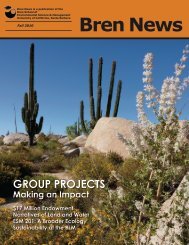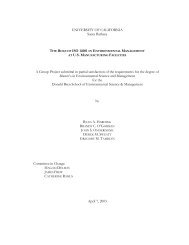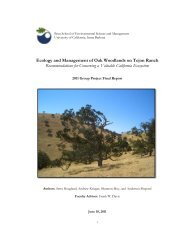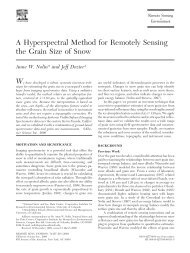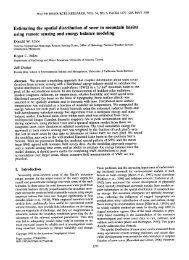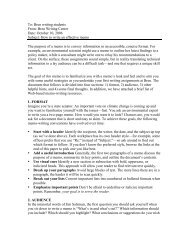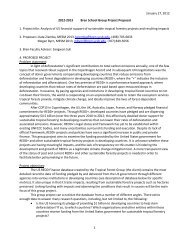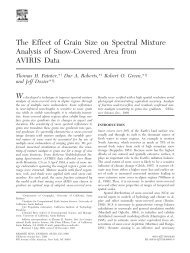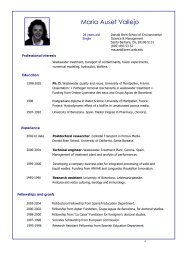GREENING UCSB: DEVELOPMENT OF AN ASSESSMENT ...
GREENING UCSB: DEVELOPMENT OF AN ASSESSMENT ...
GREENING UCSB: DEVELOPMENT OF AN ASSESSMENT ...
You also want an ePaper? Increase the reach of your titles
YUMPU automatically turns print PDFs into web optimized ePapers that Google loves.
EXECUTIVE SUMMARYIntroductionThe design and construction of Bren Hall may herald a new era of sustainability forthe University of California, Santa Barbara and the UC system. This “green” buildingincorporates the fundamental principles of sustainability: waste minimization,conservation of the natural environment and minimization of resource consumption.However, the Bren building represents only one building on a campus with manybuildings, in a system of nine campuses. Thus, the greening of Bren Hall is importantand useful only if the lessons learned apply to the <strong>UCSB</strong> campus and the UC systemin general. Two important questions arise: (1) What is the overall environmentalperformance of the campus? (2) How do we adhere to these principles ofsustainability, whose definitions and metrics change over time? With these questionsin mind, Greening <strong>UCSB</strong> was commissioned as a graduate project for the BrenSchool of Environmental Science and Management.Bren Hall has opened a window of opportunity for the University to address the issueof campus sustainability. The University educates not only in the classroom, but alsothrough physical and social interactions within and outside the campus community.Therefore, the University is uniquely positioned to influence the behaviors and valuesof individuals both on campus and in the surrounding community by demonstratingits commitment to sustainability. <strong>UCSB</strong> is located in the center of a diverse andsensitive ecological area that is surrounded by wetlands and coastal bluffs andimpacted by the large number of people and the range of activities carried out oncampus. Thus, actions taken by the University can have important implications for thesurrounding habitat.In addition to environmental benefits, campus greening efforts often result insubstantial cost savings, although in many cases, substantial capital investments arerequired. The principles of sustainability must become a focus of campus operationsand policy for the campus to realize concurrent environmental and economic benefits.Greening efforts will require changes in campus planning, operations, and practices.Increased spending associated with these changes can be justified in two ways:• Technology that is more efficient results in lower operating andmaintenance costs over time. When initial design and constructioncosts are the primary consideration, inefficient design, materials orequipment may be chosen to ensure that projects remain withinallotted budgets. However, life cycle cost analysis validates investmentin more efficient options that conserve both financial andenvironmental resources.vi



